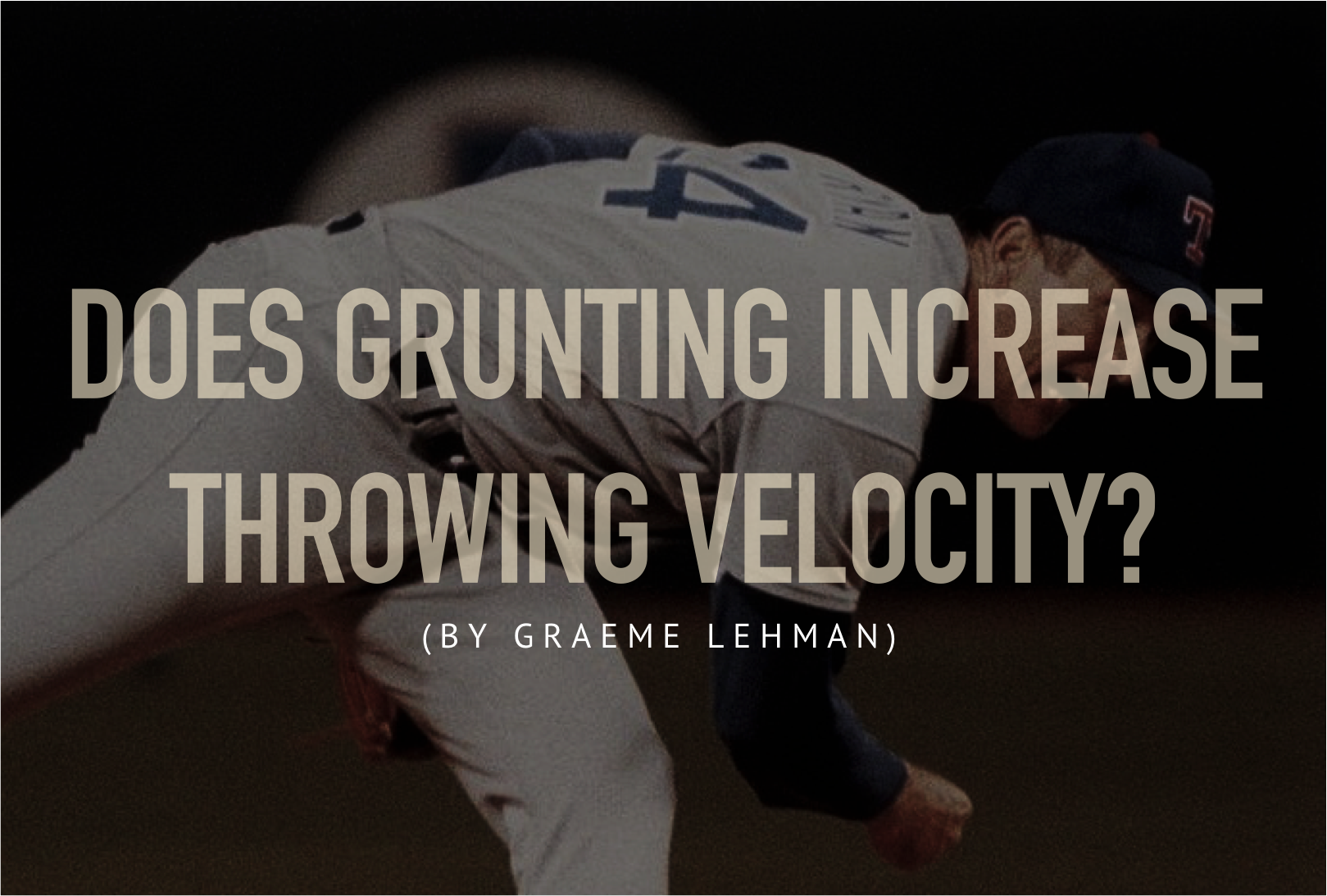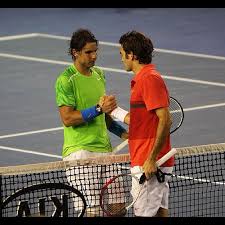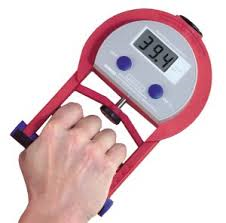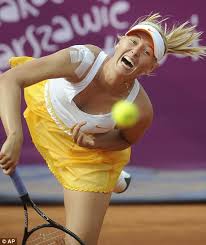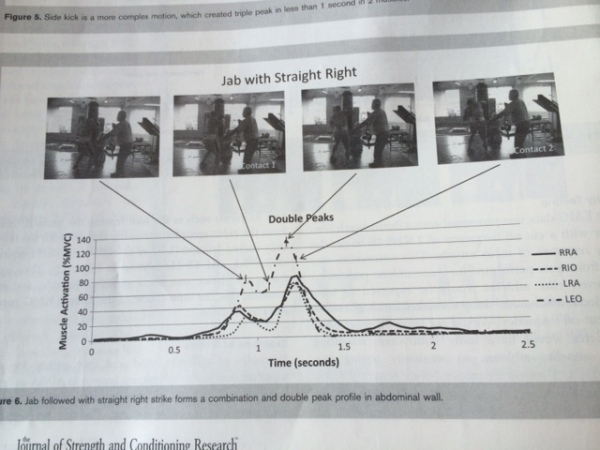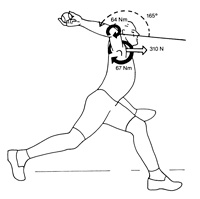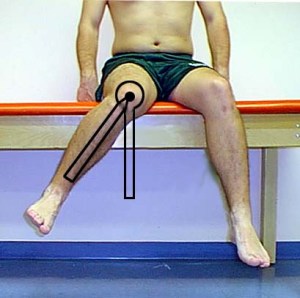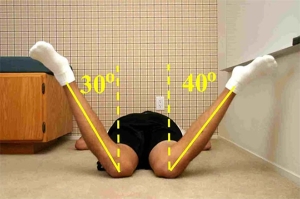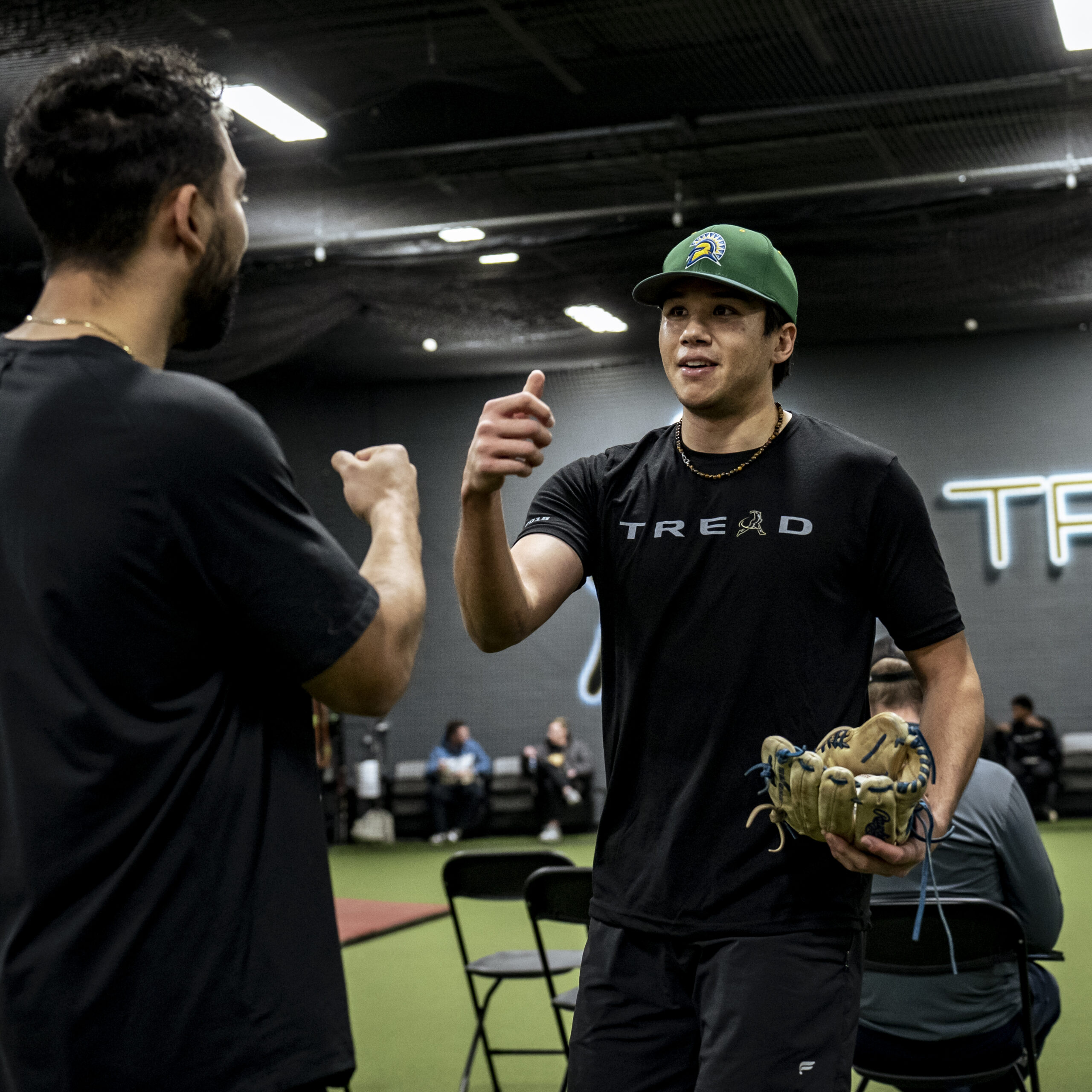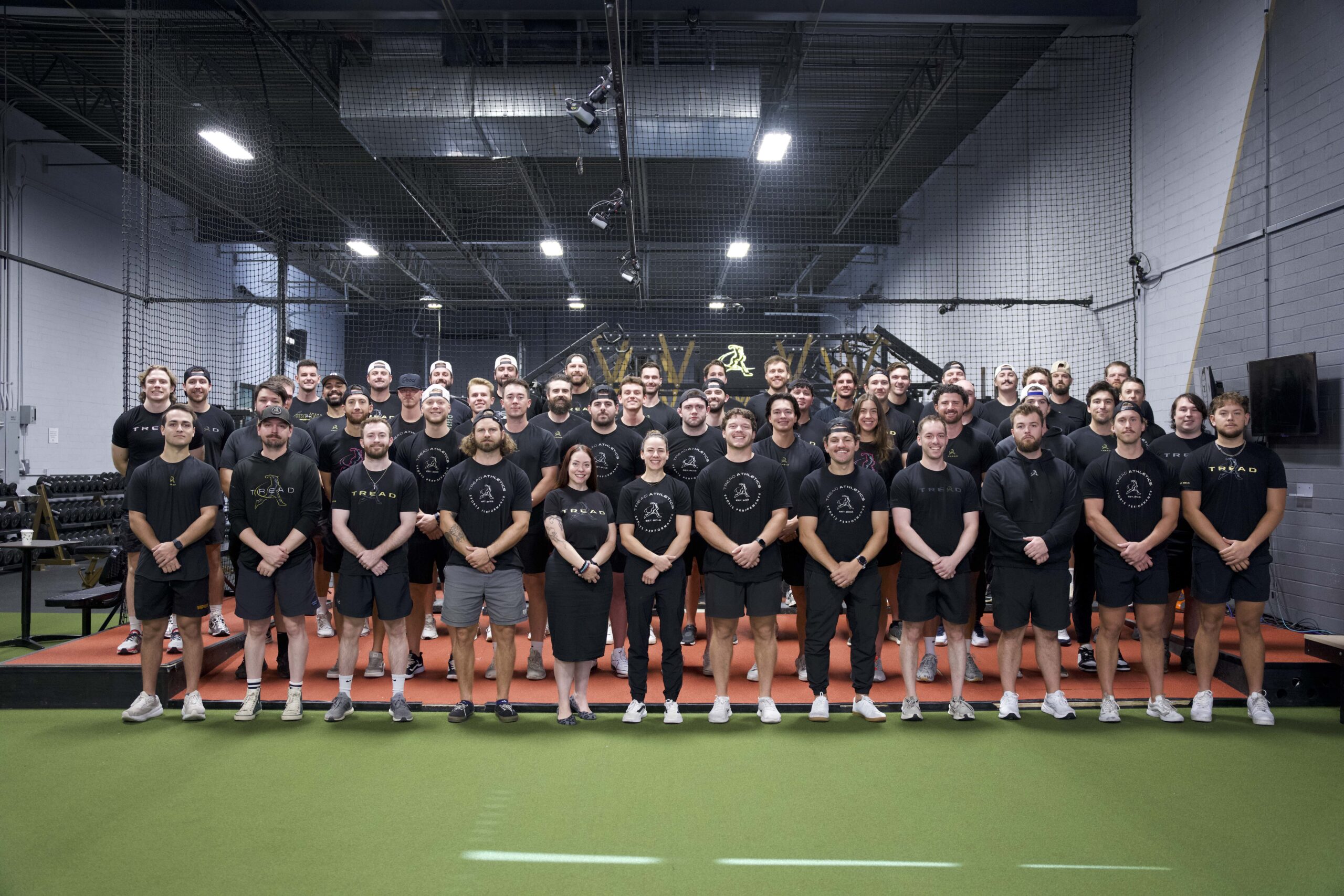By Graeme Lehman
Today’s article comes to you from Graeme Lehman (MSc, CSCS). Graeme has extensive practical and academic experience in the field of baseball strength and conditioning. He can be reached by email or through his website. This article was originally published on his blog and can be viewed there as well.
Just a couple of days ago I was flipping back and forth between channels watching a  couple of great match ups
couple of great match ups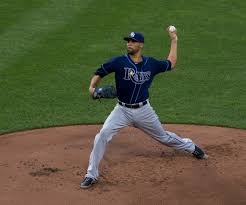 of high level athletes going head to head. On one channel David Price and Jeff Samardzija where trading punches with 95+ mph fastball’s while on the other channel Rafael Nadal and David Ferrer were on centre court in Monte Carlo going toe to toe.
of high level athletes going head to head. On one channel David Price and Jeff Samardzija where trading punches with 95+ mph fastball’s while on the other channel Rafael Nadal and David Ferrer were on centre court in Monte Carlo going toe to toe.
What I found interesting was that all four of these elite level athletes grunted every time they either threw or hit the ball.
Grunting isn’t something that you see/hear in baseball all the time but the fact that both of these flame throwers grunted on every pitch made me think that there must be something to it. In tennis grunting is part of the game and is the sport most people associated with grunting.
Tennis, just like baseball, relies heavily on velocity created through rotational power which made me think that there is something that we in the baseball world can learn and apply to our sport.
Being the baseball and exercise science nerd that I am, it made me curious to see if grunting could in fact increase throwing velocity. So I fired up the computer and starting to look on Pub Med for some academic research papers on this subject. While I couldn’t find anything related to baseball and grunting, I did find one on tennis:
—
The Effects of “Grunting” on Serve and Forehand Velocities in Collegiate Tennis Players – O’Connell et al. (2014)
When I quickly read through the abstract the final sentence had me hooked with this quote:
“The velocity, force, and peak muscle activity during the tennis serve and forehand strokes are significantly enhanced when athletes are allowed to grunt.”
This study had players hit forehands and serves with or without a “grunt”. The results below clearly showed that grunting increased velocity by about 5%.
What’s interesting is that some of the subjects, who were all NCAA tennis players, didn’t actually grunt when they played tennis but still displayed a velocity increase when they were asked to grunt during the study.
—
What is a grunt?
In this study they described a grunt as a force full expiration of air. In some martial arts it is known as a “kiap” or “kiai” which has been shown to increase handgrip force by 7% (Welch and Tschampl).
Be sure to grunt if you have to test your grip strength for an increase of 7%!!!
This forceful expiration is thought to provide some core stability with this bracing method. There is another method of bracing the core through forceful inhalation known as the Valsalva maneuver. This however but has been shown to increase blood pressure and mean arterial pressure and could lead to what’s known as “weight-lifter’s” blackout, probably something you want to stay away from. The fact that grunting allows air to escape makes it much safer.
—
How does grunting help?
The exact mechanisms that explains how grunting allows us to create more force is actually a little complicated and I am working on trying to understand it a little better myself. Because of this I will directly quote the authors here for the reason why the pectoralis major and the external oblique muscles were able to create more force when grunting:
“The parallel pathways from the central command feedforward effects of the motor cortex passing through the medullary respiratory neurons, which help recruit thoracic trunk musculature.”
Sounds complicated I know. It is basically saying that a by-product of forceful expiration (the medullary respiratory neurons part) causes more muscles in the core (thoracic trunk) to be stimulated. There were a couple of other theories that were equally as complicated but we will just stick to this one for now.
—
How exactly does grunting help increase velocity?
This line from the research paper helps sum up the reason why velocity can be increased with grunting:
“Increased dynamic and static force production occurs when the trunk is in a more stable position”
When your trunk/core is more stable it allows other muscles to produce more force both dynamically (moving) or statically (stationary). This is vital for throwing hard because we need some muscles to produce movement while others provide stationary stability to allow those moving parts to move faster.
Sometimes we need muscles to play both roles at different times of the throwing action and this quote from Kovacs et al. (2008) backs this up, in the tennis world anyways:
“Abdominal muscles accelerate and stabilize the trunk during serves.”
The muscles of the trunk, for example, need to fire to produce rotational power through movement (dynamic) but they also need to fire in order to produce stability (static) to allow optimal transfer of energy. It’s this “stiffening up” of the trunk that passes the energy we have already produced from the legs, hips and trunk onto the shoulders and arms.
—
It seems that grunting helps provide a bit more stability.
In this study the stable trunk allowed the pectoralis major to produce more force. The pectoralis major is as the authors put it “the primary accelerator” during the serve and forehand. When we throw a baseball the pectoralis major is the primary muscle responsible for internal rotation of the shoulder so it’s pretty important for baseball too. Please don’t read this and just go bench press to build better “pecs,” as it’s more complicated than that.
—
Is being stiff a good thing?
Just like anything else in pitching it really comes down to timing. There are times when you want your muscles to be stiff and strong but there are times when you want your muscles to be fast and relaxed. If you try grunting the whole time and try to “muscle” the ball to the plate the radar gun will show a decrease in velocity. Below is a quick little chart about the characteristics of muscles when they are contracted (aka turned on) and relaxed (aka turned off).
One of the real secrets to enhanced athletic performance is the ability to quickly switch between contracting and relaxing your muscles. In fact elite level athletes can relax muscles up to 8x faster (Matveyev – 1981). Going back and forth from contracted to relaxed muscles has been coined the double impulse theory.
This double impulse theory has been shown to take place in sports like MMA and golf (McGill 2014 & 2010). These are two sports that are completely different from one another, yet they share the importance of having the ability to both contract and relax muscles quickly, especially the muscles of the core.
In both cases, when they look at the pattern of muscle contraction and relaxation researchers could clearly see muscles being activated at the start of the swing or punch followed by a relaxation of the muscles followed by another activation of the muscles upon impact.
McGill et al. (2014) – Muscles of the core when throwing a Jab.
The first peak is when they initiate the punch and the second peak happens upon impact. It’s that valley between the two peaks that allows for hand to move quickly.
The relaxation between muscles contractions as you can see from the chart above is what allows the muscles (and the bones they are attached too) to move quickly. Try tensing and flexing your arm through the entire punching motion and you will see how slow your arm moves.
Another important part of the relaxation is that it is going to reduce fatigue. Contracting your muscles takes energy and as a result causes a lot of fatigue quickly which means that you get tired in a hurry.
—
How it works in throwing (in my opinion)
Once the back leg has initiated the momentum towards home plate it’s time for hips and trunk to produce some rotational power. This is when we would see the initial contraction from some of the muscles in the trunk and core. In order to get a lot of rotational speed in the trunk we need relaxation like we discussed above but we also need some range of motion.
The importance of having some range of motion is that speed takes time to develop and if you are limited in your range of motion then you will limit your ability to produce trunk rotation speed. We see this when you look at shoulder mobility. We need lots of external rotation in order to build up lots of internal rotation velocity.
If the range is small you have less time to build up speed
This range of motion in the trunk is basically describing hip and shoulder separation. And in this case a lack of hip mobility (abduction and internal rotation) would be your limiting factor in not giving our trunk enough time to build up world-class speed. Thoracic spine (t-spine) mobility would also be a limiting factor.
Two ways of measuring hip internal rotation – seated and prone
*side note: too much mobility can be a bad thing too since it makes it harder to harness this power – for more info check out this great research paper from Dr. Andrew Robb*
Once your trunk has built up that speed and is now facing home plate it is time to transfer this speed and energy to the shoulder and throwing arm. This is again where we need these muscles to contract and stiffen up so that as much energy as possible is available to help whip the relaxed throwing arm as fast as possible.
By the way this is when you grunt.
Hopefully you have found this information to be useful. I know that is has made me think about more questions but my conclusion would be that grunting would definitely provide some benefit. Better yet, a quieter form of exhalation so that baseball doesn’t go down this same road as tennis where I have to watch the game on mute.
The main part is making sure that the athlete knows and understands the importance of the roles that both muscle strength and muscle relaxation play in throwing.
And if you are going to implement grunting make sure you do it on every pitch so that you don’t tip off when you are throwing something off-speed.
Graeme Lehman, MSc, CSCS
—
Practical Application (comments by Ben Brewster). Many historically hard throwers, like Nolan Ryan, were famous for grunting. Having previously tested this idea in the past along with several teammates, there appears to be a consistent 1-2 mph bump in velocity from grunting among already hard throwers. In all cases, (there were about 6 of us who tried it), the 2-3 grunting fastballs we mixed in were the hardest pitches of the outings. This isn’t to say one should grunt every pitch, or that it will lend itself to throwing strikes, but it is interesting information to take into consideration, nonetheless.

